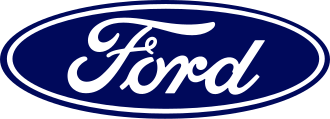Ford Motor Company, a global giant in the automotive industry, has a rich history and a significant impact on the market. Understanding who owns Ford Motor Company involves delving into its shareholder structure, founding history, and current leadership. This article provides a comprehensive look at Ford’s ownership and key details about its shareholders.

Founding of Ford Motor Company
Ford Motor Company was founded by Henry Ford on June 16, 1903. The company revolutionized the automotive industry by introducing assembly line production, significantly reducing the cost of manufacturing and making cars affordable for the average American. The Model T, introduced in 1908, became a symbol of this innovation.
Initial Ownership and Expansion
In the early days, the ownership of Ford was concentrated among a few key individuals, including Henry Ford himself. Henry Ford and a group of investors funded the initial operations. As the company grew, it expanded its reach and established itself as a dominant player in the automotive industry.
Public Offering and Shareholder Structure
Ford Motor Company went public on January 17, 1956, with its initial public offering (IPO). This move allowed the company to raise capital by selling shares to the public. Today, Ford’s ownership is divided among institutional investors, individual shareholders, and members of the Ford family.
Institutional Investors
Institutional investors hold a significant portion of Ford’s shares. These include mutual funds, pension funds, and investment firms. Some of the largest institutional shareholders include:
- Vanguard Group Inc.
- BlackRock Inc.
- State Street Corporation
These institutions own millions of shares and have a substantial influence on the company’s direction through their voting rights.
Individual Shareholders
Individual shareholders, including retail investors, also own a considerable number of shares. These investors purchase stocks through various platforms and benefit from dividends and stock price appreciation. Individual shareholders collectively hold a substantial portion of the company’s equity.
Ford Family
The Ford family retains a significant ownership stake in the company. This is primarily through a special class of stock known as Class B shares, which carry more voting power than regular shares (Class A). The Ford family’s Class B shares allow them to exert considerable influence over the company’s decisions, ensuring that the family legacy and vision continue to guide the company.
Current Leadership and Management
William Clay Ford Jr., great-grandson of Henry Ford, serves as the Executive Chairman of the company. His leadership is a testament to the family’s ongoing involvement in the business. Jim Farley is the current President and CEO, leading the company with a focus on innovation, sustainability, and global expansion.
Strategic Partnerships and Collaborations
Ford has engaged in various strategic partnerships to enhance its technological capabilities and market reach. Notable collaborations include:
- Joint ventures with electric vehicle (EV) companies to advance Ford’s EV strategy.
- Partnerships with tech firms for developing autonomous driving technology.
- Alliances with global automakers to expand its footprint in international markets.
These partnerships are crucial for Ford’s competitive edge in the rapidly evolving automotive industry.
Ford’s Financial Performance and Market Position
Ford Motor Company is publicly traded on the New York Stock Exchange (NYSE) under the ticker symbol F. Its financial performance is closely watched by investors and analysts. Key financial metrics include:
- Revenue and Profit Margins: Ford consistently generates substantial revenue from its global operations, with profitability depending on market conditions and product cycles.
- Stock Performance: Ford’s stock performance reflects its operational success, market trends, and investor sentiment. It is subject to fluctuations based on various economic factors.
- Dividends: Ford has a history of paying dividends to its shareholders, making it an attractive investment for income-focused investors.
Sustainability and Innovation
Ford is committed to sustainability and innovation. The company has made significant investments in electric vehicles (EVs) and autonomous driving technology. Key initiatives include:
- Ford’s EV Lineup: The company is expanding its electric vehicle lineup, including models like the Ford Mustang Mach-E and the F-150 Lightning.
- Sustainable Manufacturing Practices: Ford is implementing sustainable practices in its manufacturing processes to reduce its environmental footprint.
- Research and Development: Continuous investment in R&D ensures that Ford remains at the forefront of automotive technology.
Challenges and Opportunities
Like any major corporation, Ford faces various challenges and opportunities:
Challenges:
- Market Competition: The automotive market is highly competitive, with numerous players vying for market share.
- Technological Disruptions: Rapid advancements in technology require constant adaptation and innovation.
- Economic Factors: Economic downturns, fluctuating fuel prices, and regulatory changes can impact Ford’s performance.
Opportunities:
- Electric Vehicles: The growing demand for electric vehicles presents a significant growth opportunity.
- Global Expansion: Expanding into emerging markets offers potential for increased sales and market presence.
- Technological Leadership: Leading in autonomous driving technology can position Ford as a market leader in the future of transportation.
Also Read This Article:- 10 Facebook VIP Bio Ideas for a Standout Profile

